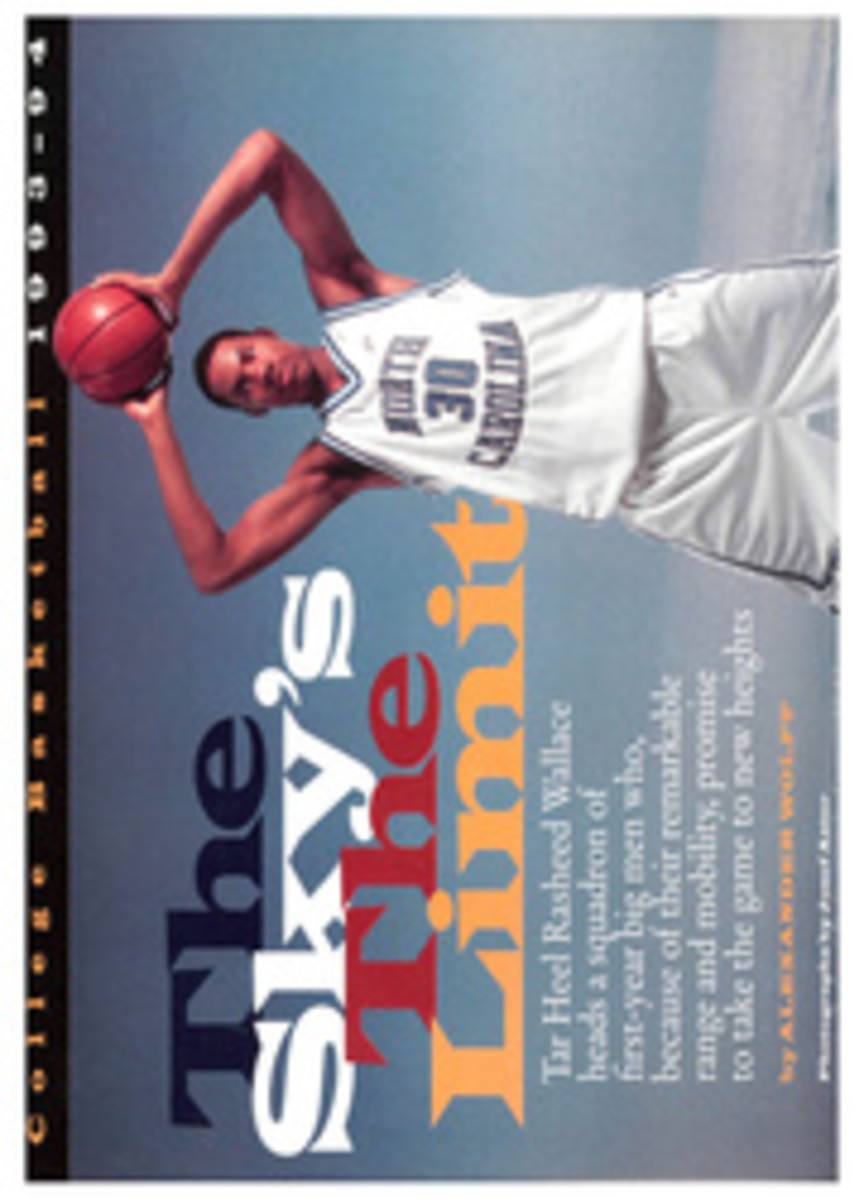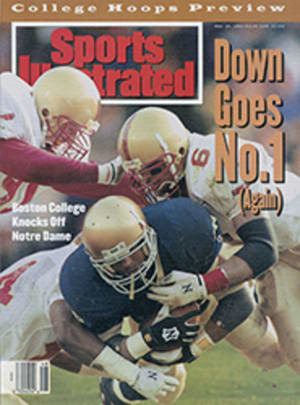
Pssst: Paint Your Car for $75,000?
There are fewer than 12 Ferrari NART Spyder sports cars in the world, each worth $2 million. At the moment, two of the cars are inside a nondescript brick building in the Los Angeles suburb of Bell Gardens, and they are in pieces. Neatly laid out on work-tables are the cars' springs, shocks, heaters, brake pedals and the rest. The body of one of the cars sits on a hydraulic lift, and if a car could quiver, the NART (North American Racing Team) Spyder would be positively jittery, poised as it is to meet the spray guns, brushes, toothbrushes and Q-tips of Junior Conway. The Raphael of the Road, the Degas of the Driveway, the Picasso of the Parking Lot, Conway is the world's finest automobile painter, and the most expensive. Want him to paint your car? Honk if you can afford to pay $75,000.
Dave Pasant, the retired CEO of a large Michigan life insurance company, is one satisfied customer. He swears by Conway to the extent that when he buys a new car, a Rolls-Royce, say, or a Maserati, he pays the dealer, then often drives his purchase out of the showroom and straight to Junior's House of Color to be repainted. At the moment, next in line behind the NART Spyders, which belong to a wealthy Texan, is a 1961 Lotus that Pasant owns. The Lotus is worth $50,000, but Conway will charge him at least $30,000 for the paint job, which does not bother Pasant in the slightest. "You've got to be a little bit nuts to do business with Junior," he says, "but 'meticulous' is not adequate to describe what he does. There's a depth and a quality to the paint; it's like looking into water. There's a satisfaction in owning a car done by Junior that transcends the price. I don't miss the money. I do it because the guy's the best there is. It's like I'm sending money to my artist friend whom I'm supporting."
Cars painted by Conway are given the sort of lavish attention Carl Fabergè bestowed on his Easter eggs. Once a car has been sent to him from New York City, Tokyo or Hawaii, Conway takes it apart completely, so that after a week the motor and the interior chassis are resting on his worktable. The body of the car is then chemically stripped down to bare steel, prepped with several coats of primer and treated to coat after coat of hand-mixed acrylic paint, part by part, before being reassembled.
This is but a summary of Conway's craftsmanship; he is a painstaking worker. The walls of the House of Color office are festooned with letters from irate customers who have concluded that taking two, or even four, years to paint their cars is "absurd" or "obsessive" or things far earthier.
Conway sticks to his paint guns. "What makes me different," he says, "is that I'm willing to do things for people that other people say are crazy." Conway does almost all of his work with a hand tool. Besides mixing his own paint and applying it so deftly that the final coat reflects light like a mirror, he uses dabs of lead applied with a torch to smooth out a car's tiniest dimples and imperfections. He welds, hammers, sands and files the entire body by hand until it is as smooth as butter, and he paints the parts of a car that nobody but a mechanic will ever see, giving them the same deep luster that he gives the roof and doors.
Special requests? He will do anything to your car that you like, from installing a hand-blown glass windshield, to putting a whale's tail on the back of an old Porsche, to painting the underside of the hood to such a sheen that, when raised, it reflects the engine the way a lake does trees in summer. Conway first did that for a New York City insurance executive. In 1986 the man brought Conway a $100,000 BMW. Conway's bill, two years later: $35,000. Painting the inside of the hood and trunk alone cost $7,500. "That's the first thing he shows anybody," says Conway proudly.
Junior was born Hershel Conway in 1938 in a log cabin in the mountains of Kentucky. When he was 13, his family moved to Southern California, where he began reading car magazines. At 16 he took an after-school job cleaning floors for George Barris, the renowned custom-car maker who designed the original Bat-mobile and the Beverly Hillbillymobile among other automotive confections, and who was the subject of Tom Wolfe's The Kandy Kolored Tangerine-Flake Streamline Baby. Barris could never remember young Hershel's name and took to calling him Junior, which stuck to Conway like a decal. Barris says he could see that Conway "had a natural ability, and we tried to encourage him right from the beginning." Soon Conway's broom was replaced by a brush, and he was painting cars, many of them in the Kandy-apple hues that Barris made famous. After seven years with the old master, Conway moved out on his own. "He's the Number One painter in the country," says Barris. "Absolutely a craftsman."
In the 1960s Conway did a lot of work for celebrities such as Steve McQueen, the Smothers brothers, Bill Cosby and Ann-Margret. Generally speaking, he wasn't happy working for them. "They're used to leaning on their names," he says. "People are awed to be providing services for them. The first car I did for Steve McQueen I got $500, and he thought that was outrageous. That was a NART Spyder."
Although he did paint the Ferrari used in the poster advertising the 1986 film Ferris Bueller's Day Off, these days Conway mostly steers clear of Hollywood. In Bell Gardens the House of Color's office and workshop are to be found in a modest brick building. Outside, only a large chrome JR indicates that clients have come to the right place. Conway doesn't advertise, but everyone knows where to find him, including the timber baron from Thailand who spent more than $400,000 in taxes and shipping alone for the privilege of getting his Rolls Juniorized, which cost him another $200,000.
The House of Color is spotless, from its tool drawers, which are filled with hammers and mallets of every size and description, to the painting booth, where at the moment a 1929 hot rod hangs on a rotisserielike contraption of Conway's design. His two assistants, Tom Mayfield, 42, and Pablo Gomez, 36, work on one Spyder while Shuffles, the resident rottweiler, knows to keep his paws out of the paint as he patrols the premises. The walls of the office are decorated with a poster of McQueen in the film Junior Bonner, the letters from customers and photographs of cars Conway has painted, including the Ferrari a Los Angeles man totaled on the way home from the House of Color. (No matter; he went right out and bought a new one and sent it straight to Conway.)
Outside is a lot clogged with cars belonging to clients who have asked Conway to hold off beautifying their babies until the economy improves. Alongside the Ferraris and a Rolls-Royce originally designed for the Queen of the Netherlands is a $7,000 Honda that Conway is storing for a friend. A "low scale" paint job for the Honda would cost at least $40,000, which Conway doesn't recommend. "There's no purpose to bringing your car here unless you want done what the shop represents," he says. "I'd be shocked if anybody came in to me with this sort of car."
The colossal fees Conway commands are accrued slowly. A pleasant man with large forearms and tufts of gray hair, he bills $50 an hour for every job and works at least 12 hours a day, six days a week; in a year he paints no more than five cars. Conway doesn't have any hobbies other than attending car shows. He drives to work in an old Mustang that has a battered right side and could use a paint job. "No time to do it," he says, adding that he struggles to break even. Conway himself has never owned a Ferrari, a Maserati or a Rolls. "I don't make enough money," he says.
PHOTO
PETER READ MILLER
Conway's craftsmanship reflects his clients' desire for the best.
PHOTO
PETER READ MILLER
Pablo Gomez prepares a Ferrari, stripped of its original paint, for a thorough Juniorizing.
PHOTO
PETER READ MILLER
The House of Color also revives oldies; Tom Mayfield works on the frame of a 1929 Ford.

